This Post May Contain Affiliate Links. Please Read Our Disclosure Policy.
Learn how to make German buttercream with this step by step photo tutorial! German Buttercream, or custard buttercream, is less sweet than traditional American Buttercream but easier than a meringue style!
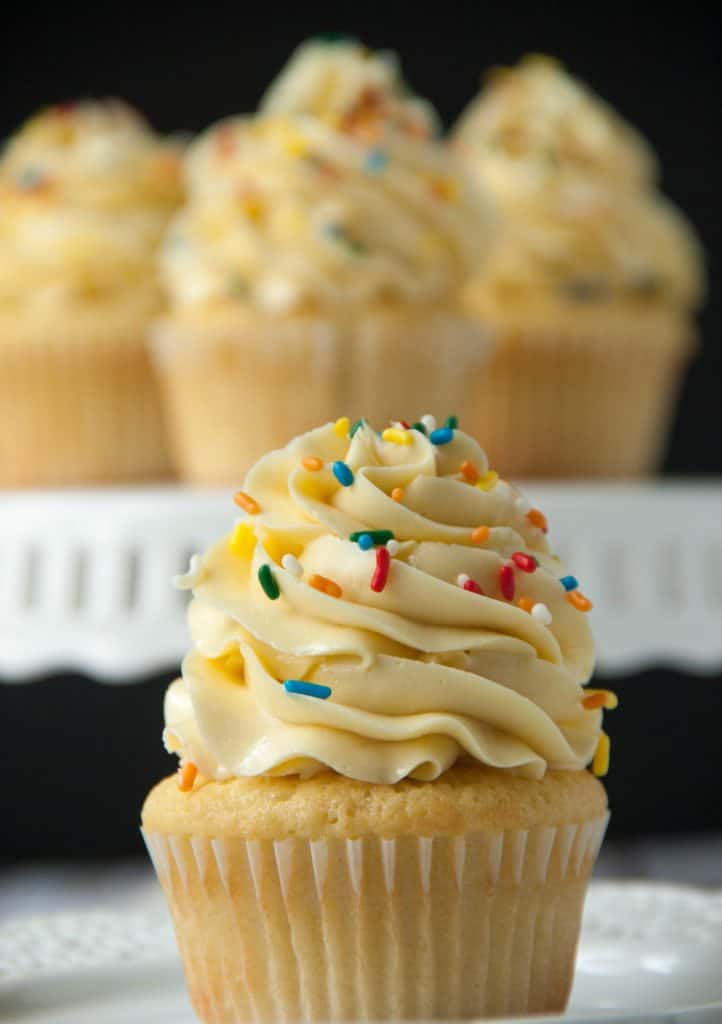
So you want to up your buttercream game from the traditional American style of powdered sugar and creamed butter, but the thought of tackling a meringue style like Swiss buttercream is still a little bit outside your comfort zone.
Enter German Buttercream recipe.
This is the perfect buttercream solution when American is too sweet for you, but making Swiss Meringue buttercream or Italian meringue buttercream scares the pants off of you.
What is German buttercream?
German buttercream falls into the same creamed butter buttercream category as American buttercream and Flour buttercream (ermine frosting). Sometimes it’s referred to as a pudding buttercream or a custard buttercream.
It’s one of 6 that I will help you master in my Buttercream Basics Guide!
The basic 3 steps are:
- Cream Your Softened Butter
- Add Your Sweetened Base
- Add your flavoring and cream until smooth.
Now for German Buttercream the sweetened base is an egg-yolk custard that you make that is similar to vanilla pastry cream. It’s almost like a vanilla pudding in a sense.
If you can make pastry cream or pudding you’re good to go. If you haven’t before, don’t worry I got step by step photos. Don’t worry I got your back.
What is German buttercream like?
Taste: Light in taste
Texture: Smooth and light in texture
Difficulty Level: Medium. A bit more difficult to make than ABC, but a good stepping point from ABC to the cubed butter/meringue-based buttercreams.
Pros: Great flavor and texture, definitely a step up from ABC.
Cons: Involves egg yolks, so can result in a scrambled egg frosting if not done correctly. Has a bit of a yellow color, so a bit more difficult to tint. A bit soft, so will not hold up well in warmer conditions.
See Also:
- Layered with fresh strawberries and homemade whipped cream this vanilla sponge cake is a beautiful cake to make any time of year!
- If you’re looking for a showstopping cake, this Milk Bar cake is the perfect dessert to make for a birthday!
- Calling all peanut butter lovers with this super easy peanut butter cream cheese frosting to use on all your favorite cake recipes!
- This easy vanilla cupcake recipe uses melted butter so it comes together in minutes and no mixer is needed!
- When it’s summertime then you have to make these S’mores cupcakes with toasted meringue frosting and graham cracker bottom!
- Get a mixing bowl and make the easiest cake ever! This Tornado cake recipe (aka do nothing cake) made with crushed pineapple, coconut, and pecans!
Ingredients Needed
To make German Buttercream, you are going to need the following ingredients:
- Unsalted butter – Can swap with salted butter but omit the added salt.
- Large Egg yolks – Separate whole eggs. You can save the egg whites to use in other dessert recipes like my angel food cake!
- Granulated white sugar
- Whole milk – For best texture whole milk is recommended.
- Pure vanilla extract – Can also use vanilla bean paste or a vanilla bean.
- Salt– If using salted butter omit the added salt. I recommend using fine sea salt.
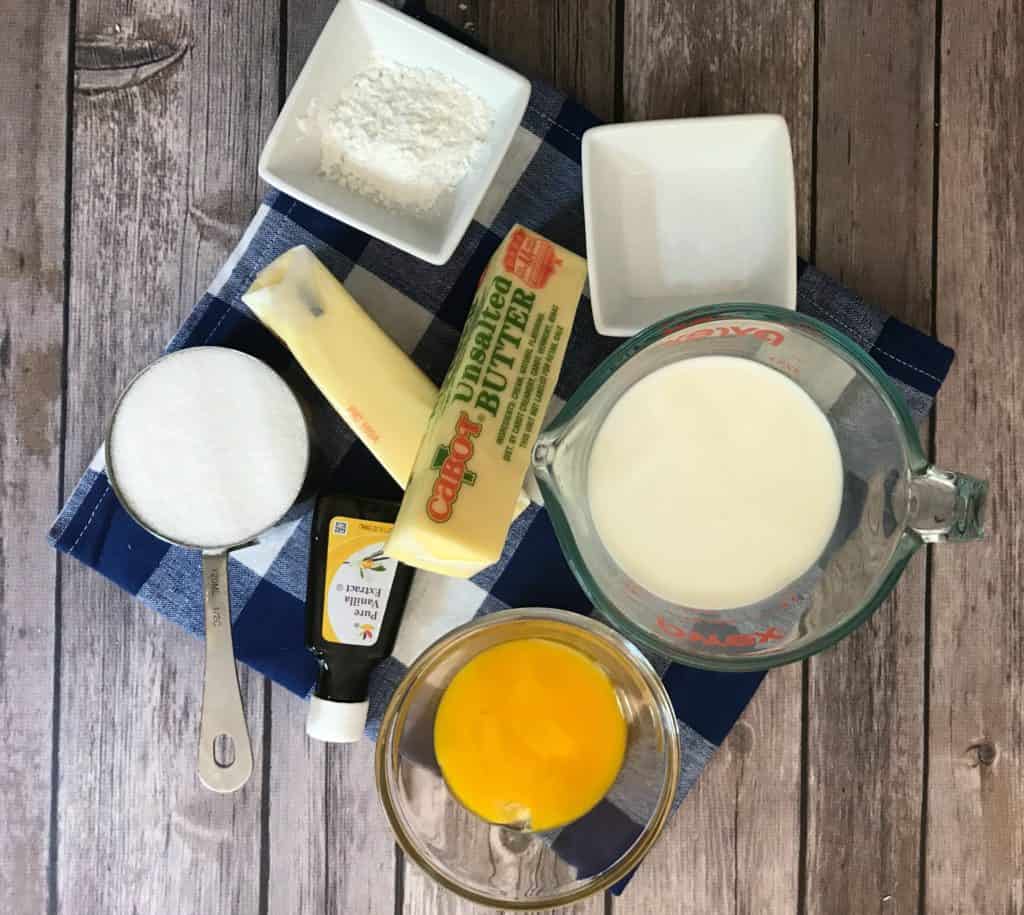
My Recommended Tools
 Buy Now →
Buy Now →  Buy Now →
Buy Now →  Buy Now →
Buy Now →  Buy Now →
Buy Now → How To Make German Buttercream
Here are the step-by-step instructions on how to make your own German Buttercream:
Step 1: Combine the milk and 1/4 cup sugar.
Combine the milk and 1/4 cup of the sugar in a medium-sized saucepan. Set aside.
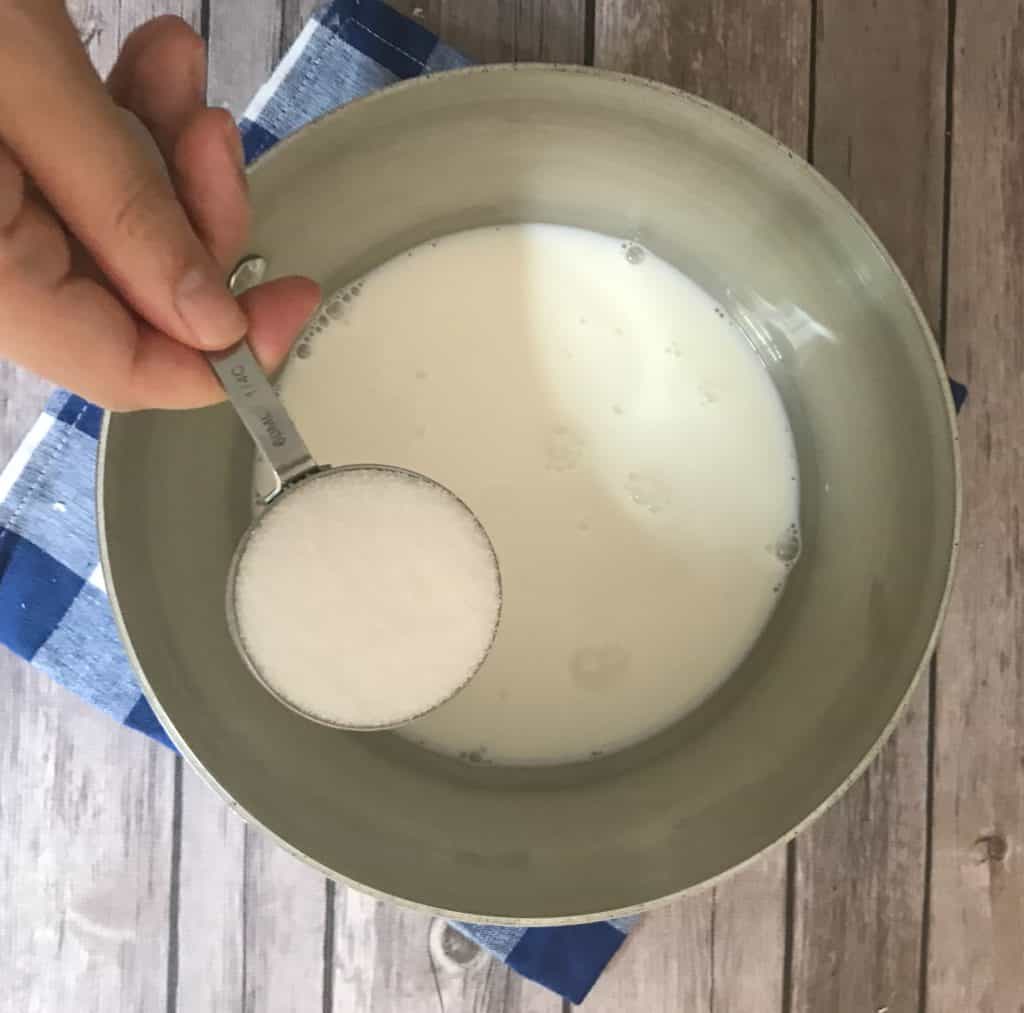
Step 2: Mix Together Sugar, Egg Yolks, Cornstarch, Vanilla and Salt.
In a separate medium mixing bowl, whisk together the remaining sugar, egg yolks, cornstarch, vanilla, extract, and salt. Whisk until the mixture is combined and foamy. Set the mixture aside.
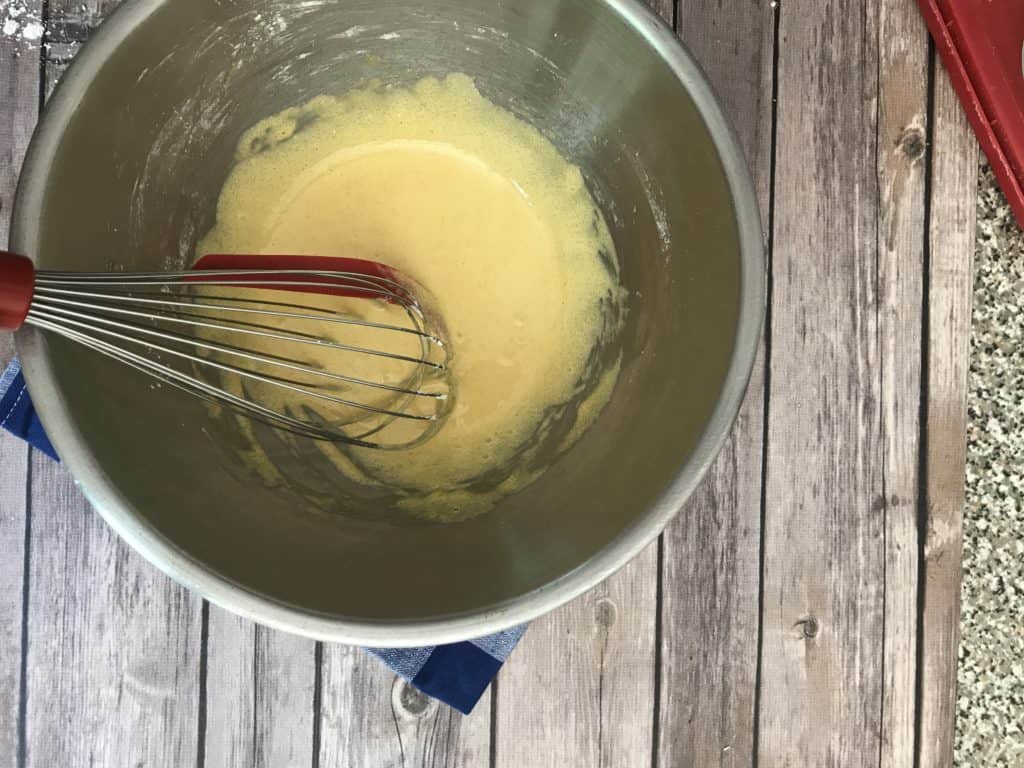
Step 3: Heat The Milk And Add To The Eggs
With the saucepan from step 1, heat the mixture over medium-low heat, stirring frequently to prevent scorching and for the sugar to dissolve. Bring the mixture to a simmer, then remove from the heat.
Then pour a 1/3 of the mixture into the yolk mixture to temper the eggs .
Pro Tip: You want to add just 1/3 at first so as not to scramble the eggs. This will slowly bring the eggs up to temperature.
Continue to add the rest of the milk mixture, whisking vigorously to combine.
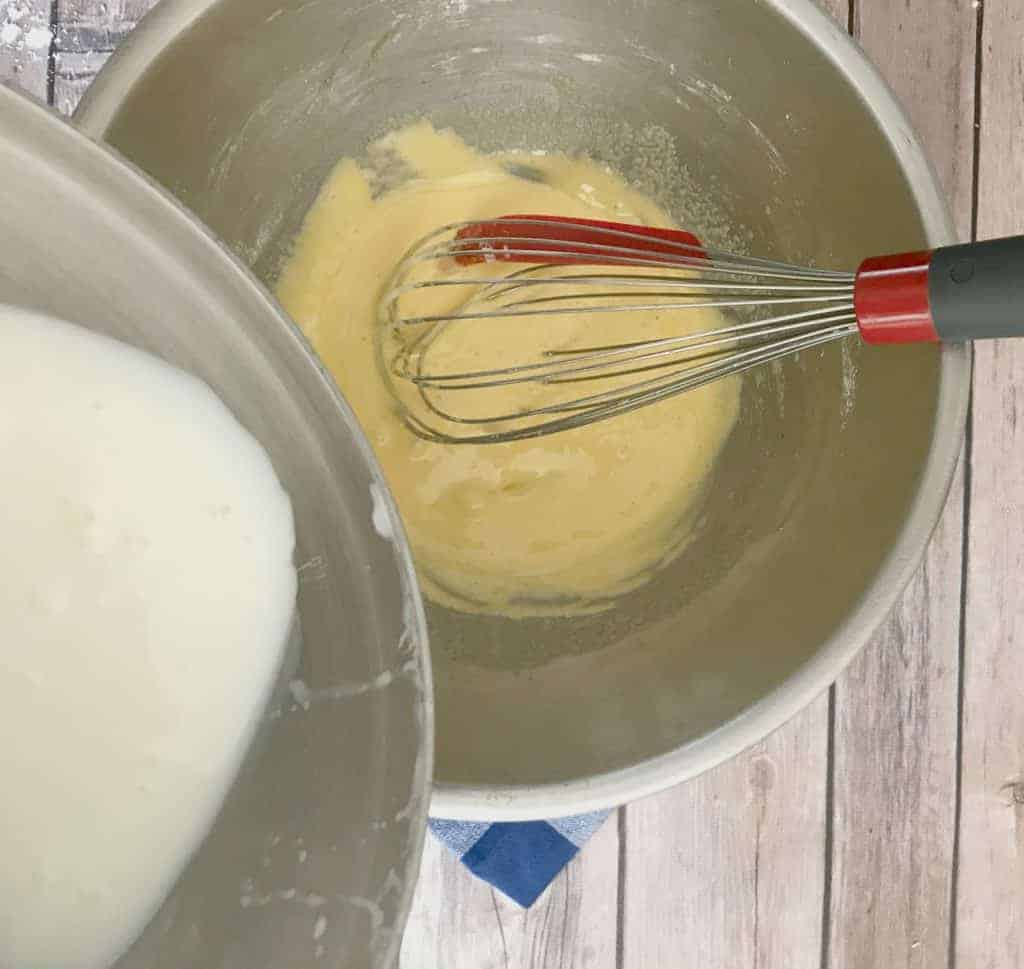
Step 4: Heat until the mixture becomes thick.
Pour the mixture back into the same saucepan. Place it back on the stove on medium-low heat, stirring constantly, until the custard mixture becomes thick. At first sign of bubbling, remove the mixture from the heat.
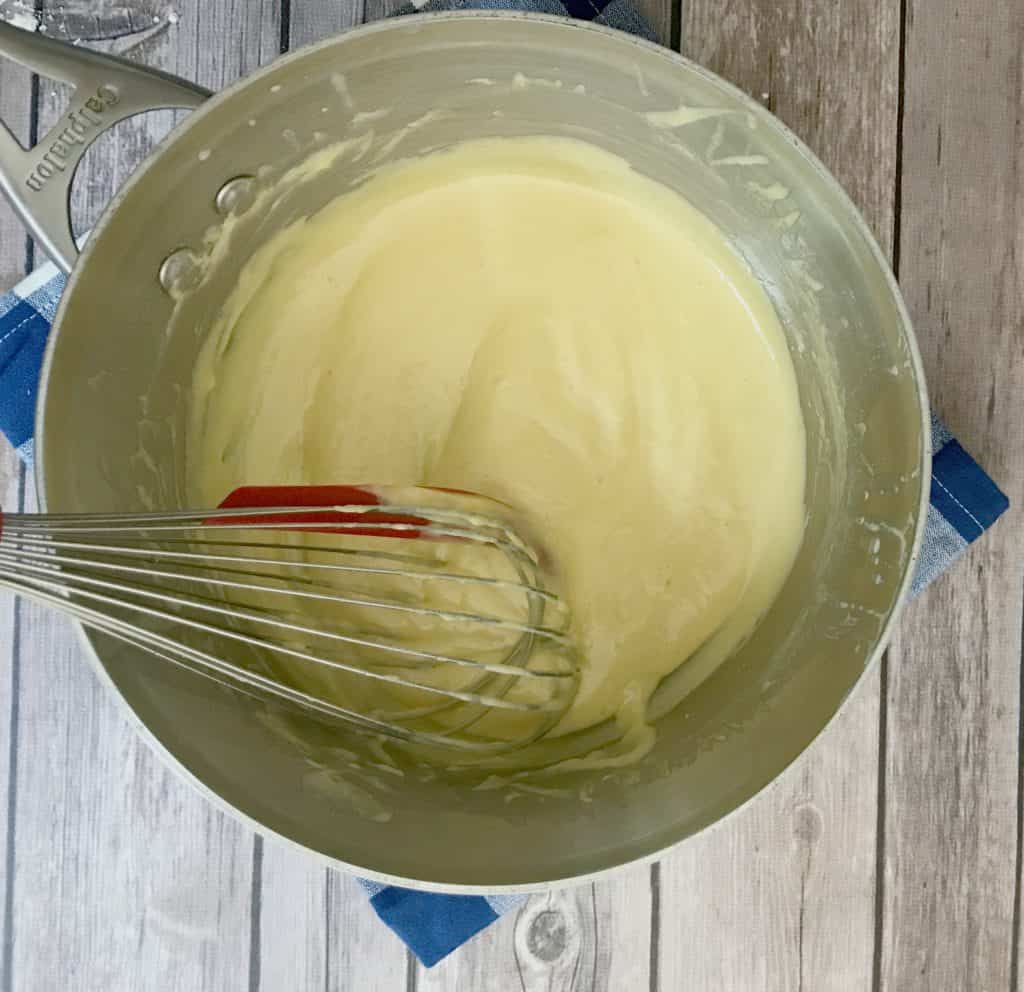
Step 5: Transfer the custard to a bowl and cover with plastic wrap.
Cover the custard with a sheet of plastic wrap. Be sure the plastic wrap touches the surface of the custard, to prevent a skin from forming.
Chill the custard until completely cool (this could take about 2 hours). But don’t rush this step! You could always do this a few days ahead of time when making German Buttercream frosting.
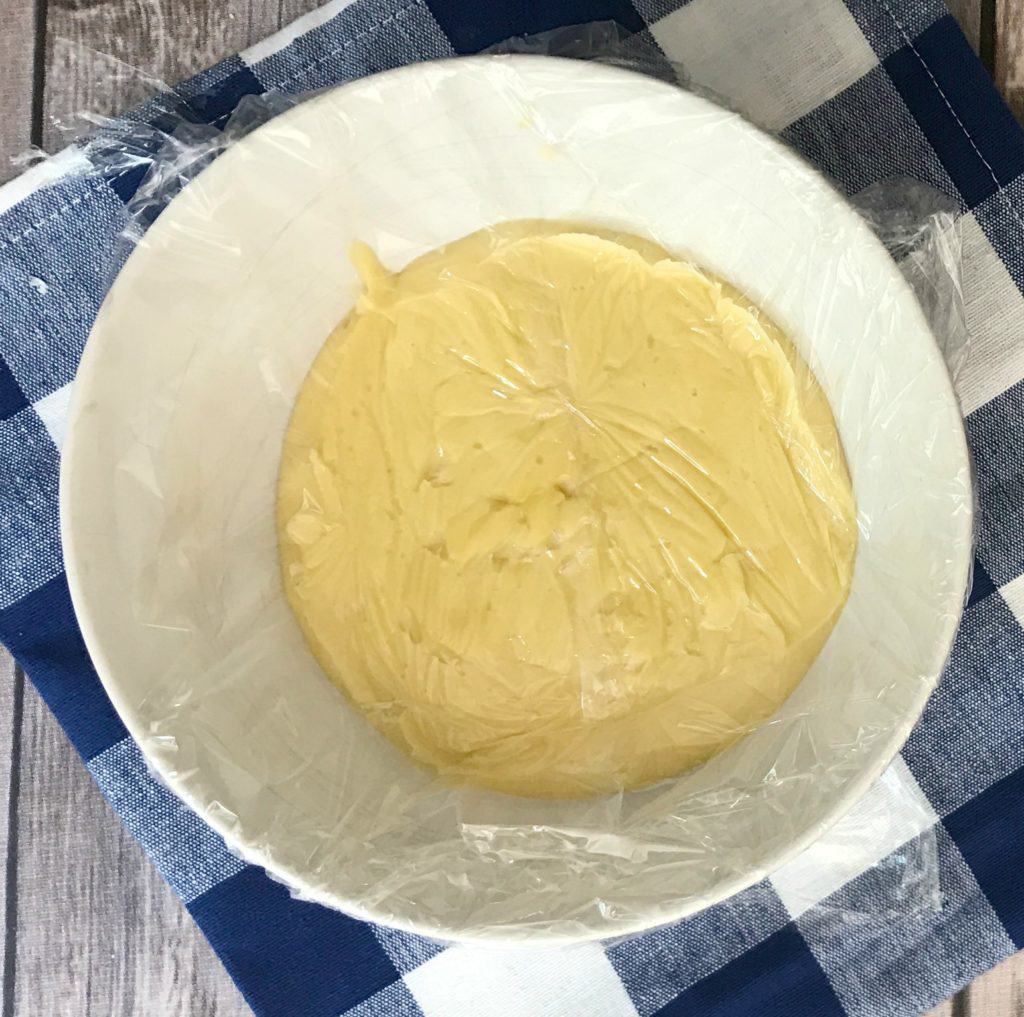
Step 6: Cream your softened unsalted butter
Use an electric mixer to beat in the soft butter. You can use your stand mixer fitted with a paddle attachment (or hand mixer) for about 2-3 minutes until soft and creamy.
Pro Tip: Soften your butter quickly by cutting the butter into cubes and letting it sit on your counter for 30 minutes. Here are more ways to soften your butter quickly.
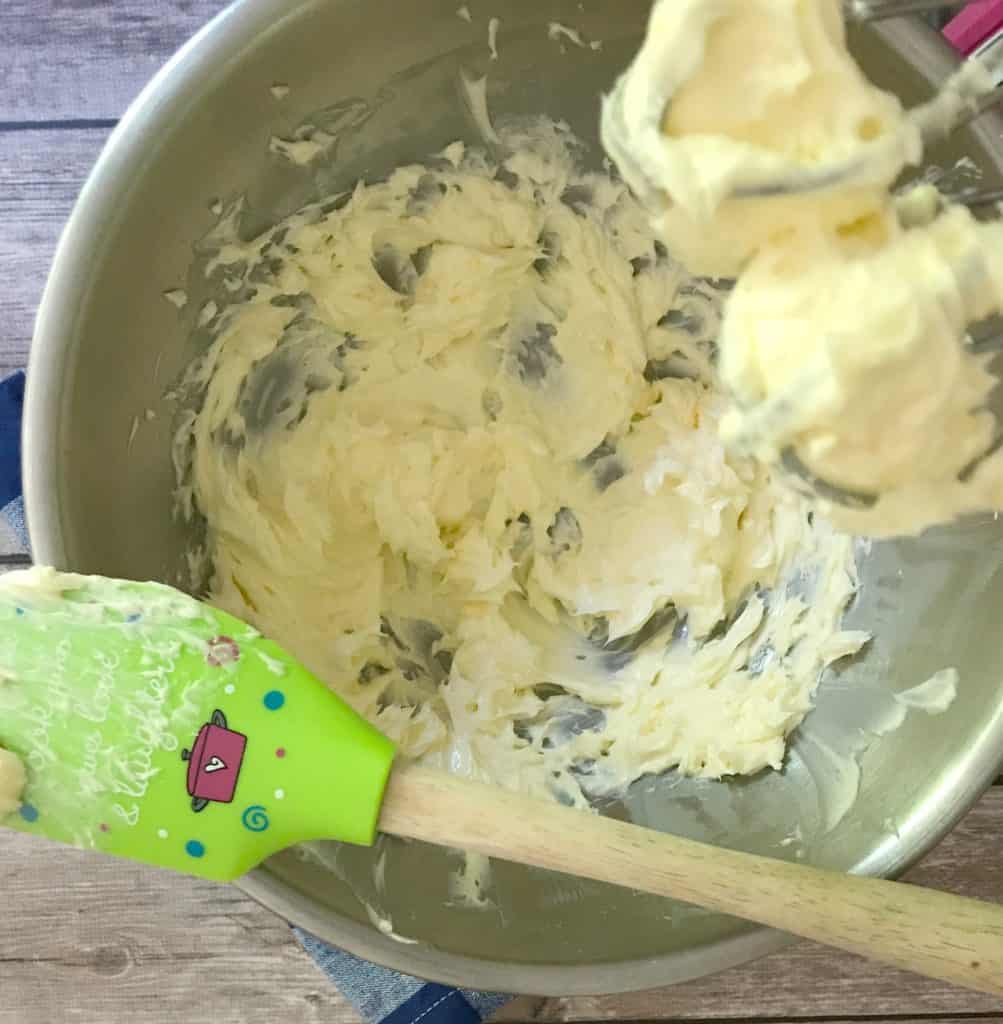
Step 7: Add the cooled custard
Be sure to add the thick custard base a few tablespoons at a time and creaming until combined. Scrape down the sides of the bowl with a rubber spatula as needed.
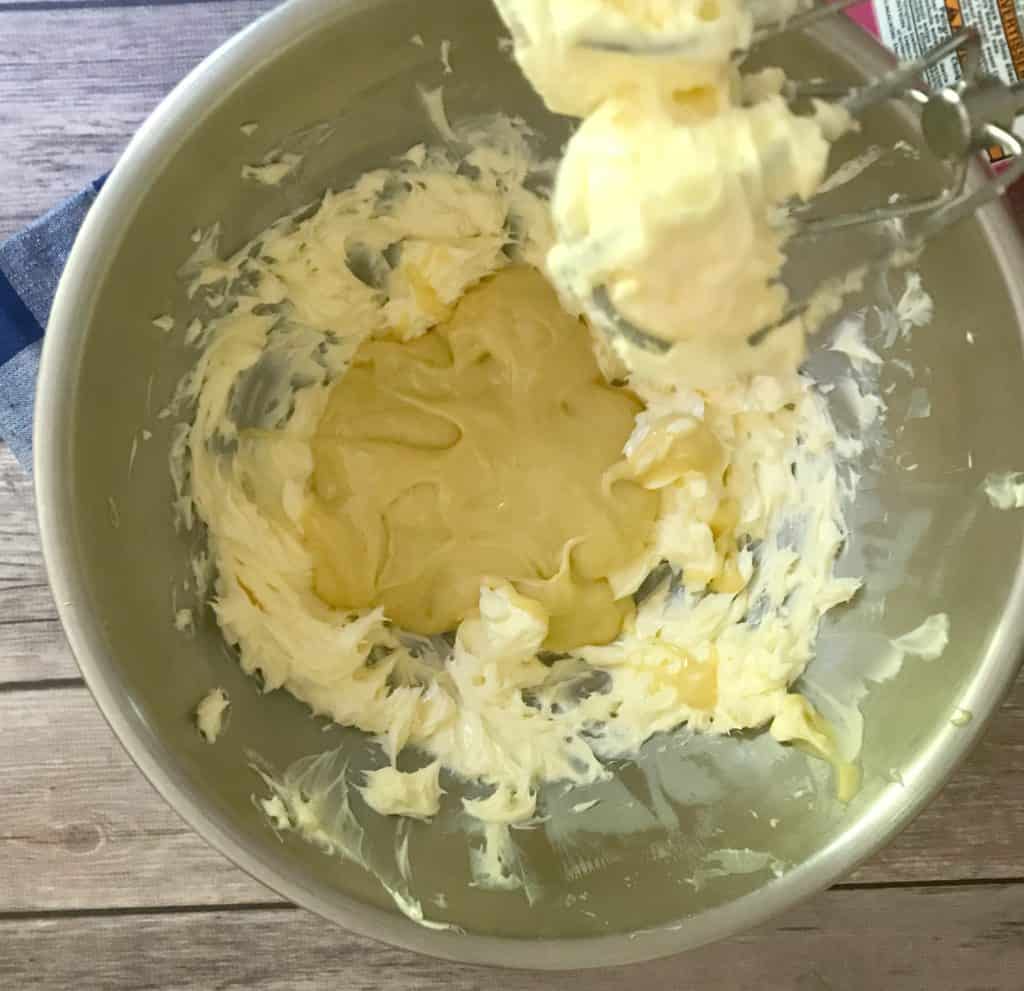
Step 8: Cream Until Smooth.
You can use this buttercream immediately, or store in your refrigerator for up to 5 days. You will just need to re-whip it again until it smooth and creamy again.
You can also freeze it for up to 3 months. When ready to use, just let it thaw in the refrigerator overnight and re-whip again until smooth.
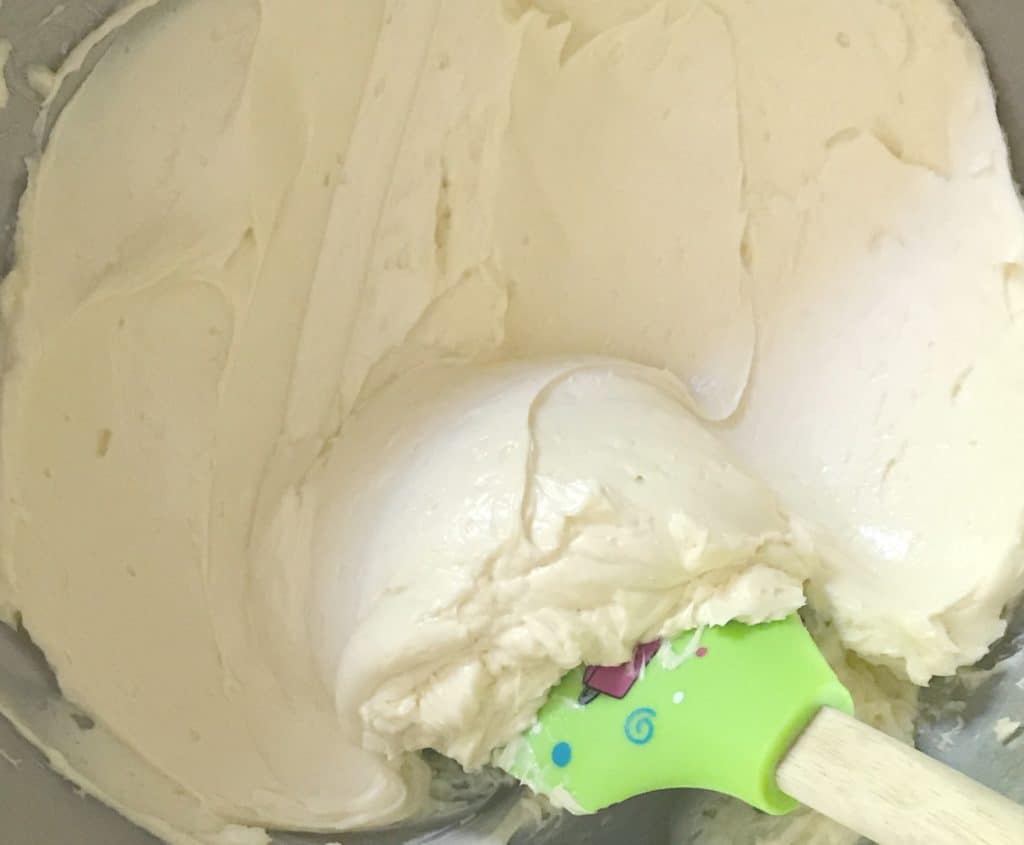
Step 9: Frost Your Cupcakes!
Now it’s time to frost those cupcakes! For these cupcakes I used my vanilla cupcake recipe. You can even use it on my easy one bowl chocolate cupcakes, no problem.
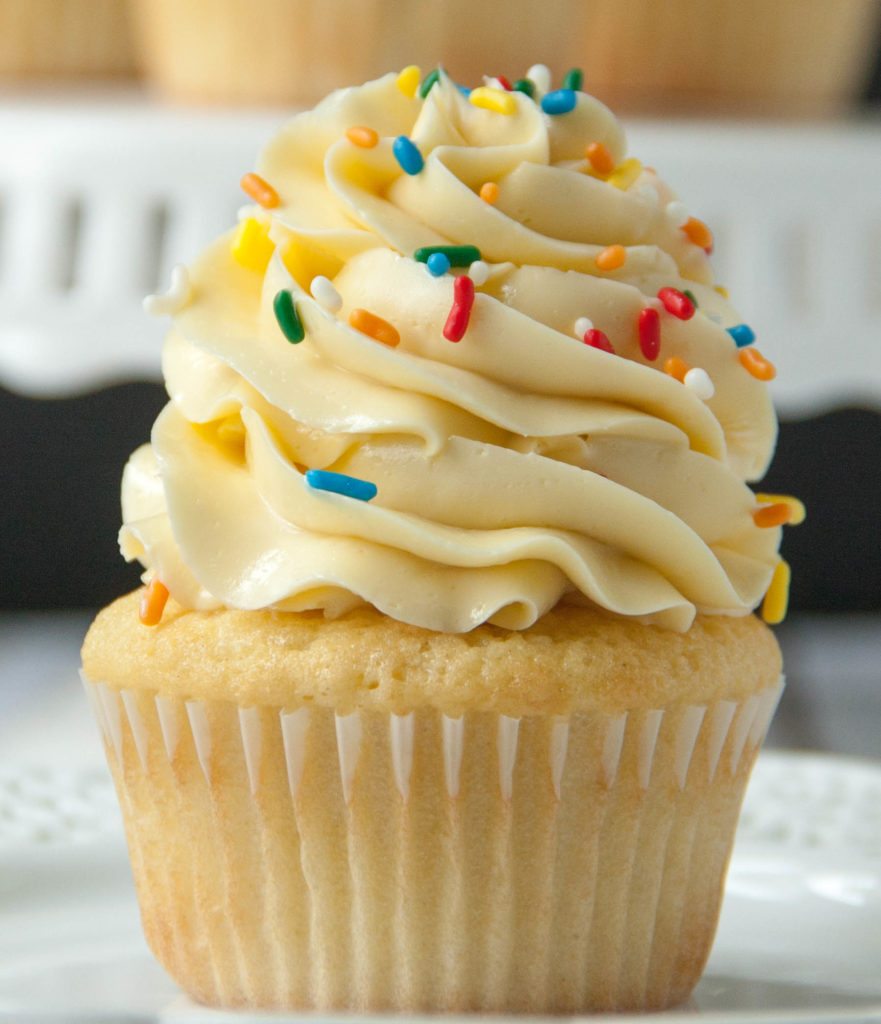
Recipe Tips
- For help on separate your eggs cleanly, read how to separate eggs (6 ways!).
- This icing has the best consistency right after it’s made. But if you make it ahead, store in the refrigerator. Then let it sit at room temperature to warm slightly, then re-whip before spreading as usual.
- This buttercream is sensitive to heat. It is not recommended to use this frosting if you plan to serve it outside at outdoor summer events.
- Plan on refrigerating a cake or cupcakes in German buttercream until ready to serve!
Flavoring German Buttercream
- Chocolate German Buttercream – Beat in 1/3 cup cocoa powder after you’ve added the butter. Once you’ve added the custard, then add cooled, but melted chocolate to the frosting. Add 1 cup chopped melted dark chocolate to the mixture.
- Coffee– Add 2 Tablespoons instant espresso powder dissolved in 1 teaspoon water. Then stir in at the end.
- Caramel – Add 1/2 cup store-bought or homemade salted caramel sauce.
- Peanut butter – Add 1/2 cup peanut butter
- Lemon – Beat in 1 Tablespoon lemon zest with the butter. Add lemon juice at the end 1 Tablespoon at a time until desired flavored is reached.
How To Use German Buttercream Frosting
You can use this German buttercream frosting just like you would for any other types of buttercream! Use to frost vanilla cupcakes or chocolate cupcakes. Or use this silky frosting as as a cake filling in a layer cake, like my vanilla cake.
Or you can also use a filling in cream puffs or chocolate eclairs!
Recipe FAQ’s
German buttercream is fully cooked, so it’s fine to leave the buttercream or a cake covered in this frosting, for a few days at room temperature. I just keep the buttercream in a container or cover the cake to keep it protected.
Yes, again if using within a few days you can keep it stored at room temperature. Otherwise, I keep the buttercream in my refrigerator for up to 5 days.
Any longer, I freeze the buttercream for up to 3 months. When ready to use, just let it thaw, covered, in the fridge overnight. Then whip again until the desired consistency is reached before piping and frosting.
Read this post on how to store your leftover buttercream.
More Recipes To Try
- Self Rising Flour Biscuits
- Lemon Cookies
- Brown Sugar Chocolate Chip Cookies
- 20 Self Rising Flour Recipes
- Milk Bar Cake
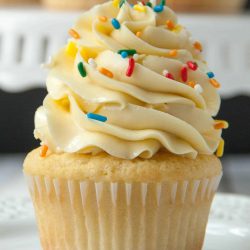
German Buttercream
Ingredients
- 3/4 cup (180 ml) whole milk
- 1/2 cup (100 g) granulated sugar divided
- 3 large egg yolks at room temperature
- 1 tablespoon cornstarch
- 1 1/2 teaspoon vanilla extract
- 1/8 teaspoon salt
- 1 cup (2 sticks, 226 g) unsalted butter softened
Instructions
- Combine the milk and 1/4 cup of the sugar in a medium-sized saucepan. Set aside.
- In a separate medium mixing bowl, whisk together the remaining sugar, egg yolks, cornstarch, vanilla extract and salt. Whisk vigorously, until the mixture is combined and little bit foamy. Set the mixture to the side for the moment.
- With the saucepan from step 1, heat the mixture over medium-low heat, stirring frequently to prevent scorching and for the sugar to dissolve. Bring the mixture to a simmer, then remove from heat.
- Pour about 1/3 of the hot milk mixture into the egg yolk mixture, whisking the egg mixture as you pour the hot milk (this keeps the eggs from “setting” and forming lumps). Whisk vigorously to combine. Slowly add the remaining milk mixture, whisking all the while. The mixture will be quite liquidy.
- Transfer the custard to a bowl and immediately cover with plastic wrap, pressing the plastic directly on the surface of the custard to prevent a “skin” from forming.
- Place the custard in the refrigerator; let it cool to room temperature. Don’t rush this step — it is key in attaining a smooth texture in your buttercream. (If you refrigerate the custard to cool it down quickly you need to make sure to bring it back to room temperature, it should NOT be cold when added to the butter).
- Once your custard mixture has cooled down , it’s time to finish your buttercream. In a stand mixer fitted with the paddle attachment or using a hand mixer, cream the butter until light and fluffy, 2-3 minutes on high speed.
- Add the custard mixture to the creamed butter and continue mixing on high speed until the frosting is smooth and creamy, anywhere from 3 to 5 minutes.
Notes
- Storage: Keep it stored at room temperature. Otherwise, I keep the buttercream in my refrigerator for up to 5 days. Any longer, I freeze the buttercream for up to 3 months. When ready to use, just let it thaw, covered, in the fridge overnight. Then whip again until the desired consistency is reached before piping and frosting.
- This icing has the best consistency right after it’s made. But if you make it ahead, store in the refrigerator. Then let it sit at room temperature to warm slightly, then re-whip before spreading as usual.
- This buttercream is sensitive to heat. It is not recommended to use this frosting if you plan to serve it outside at outdoor summer events.
- Plan on refrigerating a cake or cupcakes in German buttercream until ready to serve!
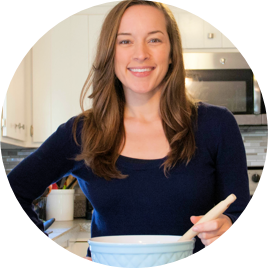
Nia Nisa says
Hi.. Can i use this buttercream as macaron filling? Thanx!
Heather says
Hi Nia! Yes I think it would work great!
Michelle says
My buttercream came out grainy and looks like it wants to separate. I cooled the custard until ice cold my butter was softened…Did I over whip It? I don’t really understand what happened.
[email protected] says
Hi Michelle… I would try continuing to mix. Mine usually starts out kinda grainy and can also separate but after mixing (sometimes it needs up to 10 minutes). Your custard needed to be cooled down to room temperature but not ice cold. I’ll fix this recipe so it reflects this so it’s not confusing. But again try mixing for a bit longer until it smooths out! Hope that helps!
Michelle says
Can you use 1/2 butter & 1/2 shortening or does it have to be all butter?
Heather says
I haven’t tried it but have made regular American buttercream with it. I think it should work! Let me know if you try it!
Donna says
My German buttercream came out perfect! I love how is a lot less sweet than an American buttercream. And the taste is wonderful! I could only do 18 of my 24 cupcakes and was not able to pile high, like in your photo! But I did a few that way and they look beautiful! Thanks for the recipe and all your directives!
Heather says
That’s awesome Donna!! Yes that’s why its one of my favorites 🙂
Patrick says
Do you know the weight of the pastry cream / custard? Thanks
Heather says
Hi Patrick! I did not get the weight of the pastry cream/custard unfortunately. Sorry!
Leanne | Crumb Top Baking says
I always make American buttercream. I’ve never made, or even heard of, German buttercream. But I like what I’m seeing. I’m particularly in love with your buttercream to cupcake ratio! Love how it is piled on!. And great step by step instructions too!
Heather says
Thanks Leanne! Yes this custard buttercream is delicious! And haha yes I love my giant pile of buttercream 🙂
Amanda Mason says
This is such a helpful post!! I dont think most people understand how much does into making frostings and the different techniques/ingredients needed. I’m definately more on the less sweet side so I’m all over this recipe!!!
Heather says
Thanks Amanda! Yes it’s a great buttercream if you think American is too sweet. Enjoy!
Lorie says
This tutorial is perfect for me, the frosting newbie. Trying to branch out of store bought and buttercream is where I’m starting!
Heather says
Oh once you make your own Lorie you will never go back to storebought! 🙂
Karyl Henry says
I’m so NOT an accomplished baker, but I’m loving this buttercream! And it actually looks like it’s not too hard. I may have to give this a try. Looks divine, and perfect for those cupcakes
Heather says
It’s definitely not as difficult as some of the meringue buttercreams like Swiss.
Pearl Rodrigues says
I love how smooth and creamy this buttercream texture is. It feels perfect for the cupcake recipe I plan to make this weekend. Gonna give it a shot
Heather says
Oh that’s aweesome Pearl! I can’t wait to hear how it goes 🙂
Jennifer says
Best Frosting EVER!!!!!
Heather says
Aww thanks Jennifer!! 🙂
Michelle says
I never knew there was such a thing as German buttercream! It sounds delicious, so happy I found out about it. And such an informative post too, I can’t fail!
Heather says
Thanks Michelle…it’s delicious 🙂 Enjoy!
Dominique | Perchance to Cook says
I have never made german buttercream before, but this post has convinced me that I need to! I am saving this because I need to master that perfect looking frosting! NOM
Heather says
Oh that’s great Dominique! Let me know how it goes!
Anna says
The texture of that buttercream looks so heavenly!!! I also never heard of it before, but I’m definitely trying it out soon! Looks and sounds too good to miss!
Heather says
Oh it definitely is Anna! Can’t wait to hear how it goes!
Amanda says
Oh, wow, this looks like the dreamiest frosting ever! And it looks so perfect for piping. I can already think of the different cupcakes and cakes I want to try this on — thanks for sharing!
Katherine | Love In My Oven says
Yay Heather! I’m glad you fixed the comment form so I can comment on this delicious looking buttercream. I have never heard of German buttercream – that’s what I love about the food blogging community. I’m always discovering new recipes to try!
Heather says
Hi Katherine! Yes gotta love technical issues 😉 but yes this is a lesser known buttercream but soooo good!!
Susie says
The written directions in the purple box stop at removing the custard from the heat.